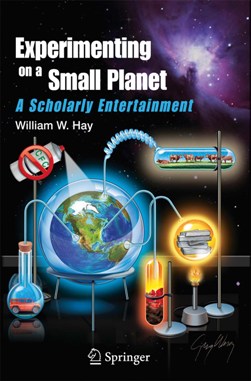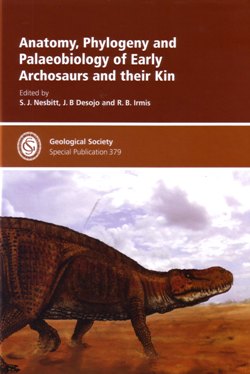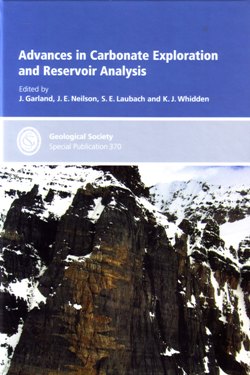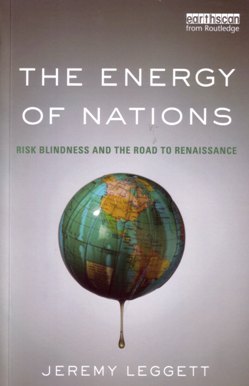 Experimenting on a Small Planet
Experimenting on a Small Planet
This thick and well-illustrated volume is a highly readable tour through the multidisciplinary science behind Earth’s oceanographic and atmospheric warming and cooling on both geologic and anthropogenic timescales, by a major contributor with a phenomenal grasp of the whole. Here are the diverse topics that comprise all the sciences within that huge field, each given a history and in-depth treatment with easily understood (but not dumbed-down) explanations of complex causes, effects, and interactions. Many of these topics are neglected in mainline global-warming work, and professionals as well as outsiders will find much that is new to them.
Hay’s perspective from his long career provides much insight lacking in the physics that dominates anthropogenic-warming studies. He emphasises the enormous changes that can follow tipping points, such as the recent one that has made inevitable an Arctic Ocean mostly ice-free in summer, and the delays, feedbacks, and complexities that ensure continuing long-term mega-changes from that threshold.
The decreasing temperature gradient south from the Arctic has already made the northern jet stream slower, more frequently erratic, and much more likely to stall in place with the weather masses it controls. Extreme weather is steadily increasing as a result, and more and worse would be coming even if greenhouse gas emissions stop immediately (which of course will not happen). Predicting the specific great changes in oceanic and atmospheric circulations is confounded, however, because there has been no documented past occurrence of an icy Antarctic and an ice-free Arctic from which to reason by analogy, and north-south interconnectedness is uncertain, nor has there been anything comparable to our geologically instantaneous increase of greenhouse gasses to levels unknown for 35 million years.
Bill Hay has searched for explanations of the two major stable states of Phanerozoic climates, “greenhouse” and subordinate “icehouse”, and of the switches between them. He has focused on the Cretaceous and early Paleogene, when the poles were mild and temperate and deep oceans were warm, and the middle and late Cenozoic, when Antarctic continental ice and a mostly-frozen Arctic Ocean produced strikingly different regimes because the world’s oceans were dominated by polar-chilled deep water, and the atmosphere by great latitudinal temperature and pressure gradients, a regime that culminated in the waxing and waning continental ice sheets of the past two million years.
Changes due to even ‘present’ atmospheric CO2 levels would continue to develop for millennia before new quasi-equilibria were established. Mankind is facing catastrophe as a rapidly increasing population simultaneously outgrows its resources and enters a more hostile global environment.
Reviewed by Warren Hamilton
EXPERIMENTING ON A SMALL PLANET, A Scholarly Entertainment
HAY, WILLIAM W Published by: Springer-Verlag, 2013. XXIV, 963 p., 403 illus.
ISBN 978-3-642-28559-2 (hbk). List price £22.00. www.springer.com
 Anatomy, Phylogeny and Palaeobiology of Early Archosaurs and their Kin
Anatomy, Phylogeny and Palaeobiology of Early Archosaurs and their Kin
The archosaurs, today represented by birds and crocodiles, originated in the earliest Triassic from Late Permian forebears, and the group enjoyed great success in the aftermath of the devastating Permo-Triassic mass extinction. The living archosaurs are specialised endpoints of a once much more diverse clade, comprising dinosaurs, pterosaurs, and crocodiles, and their ancestors, and it was in the Triassic that these lines all originated.
Triassic archosaurs first attracted attention in the 1820s and 1830s when the first tetrapod remains were recovered from the classic Triassic red beds of Germany and England, and a great deal has been discovered since. A new generation of researchers, represented in this book, has been recovering new materials from all corners of the world, from Argentina to China and Tanzania to Greenland, but importantly working thoroughly through the older specimens in museums. The result here is a magnificent series of 12 initial chapters that review each of the major Triassic archosaurian clades with great thoroughness.
These chapters incorporate recent analysis and new discoveries, and provide the definitive account of the systematics and phylogeny of each clade, with comments on palaeobiology. The remaining 12 chapters are ‘contributions to knowledge’ concerning diverse Triassic archosaurian themes, and might have been better accommodated in regular journals, so retaining the integrity of the first half of the book as a comprehensive overview of Triassic Archosauria. Nonetheless, all are of high quality.
The diversification of archosaurs through the Triassic is one of two major switches in the relative success of reptiles and synapsids (= mammals and their ancestors). Synapsids were the dominant terrstrial tetrapods in the Permian, and they are today. Reptiles, primarily archosaurs, and among them, dinosaurs, dominated through the Mesozoic, bookended by the Permo-Triassic and the Cretaceous-Paleogene mass extinctions, 252 and 66 million years ago. It is for this reason that understanding the diversification of archosaurs in the Triassic matters.
In a final chapter, Alan Turner and Sterling Nesbitt provide a fascinating investigation of processes behind this radiation, finding modest evidence for a driven trend in body size increase, contrary to another recent study (Sookias et al., Proc. R. Soc. B 279, 2180-7; 2012), which found that the general increase in body size among Triassic archosaurs was passive, and not a driven trend. These are early days in the numerical exploration of macroevolution, and the basis for such important work is the thorough documentation of fossils, systematics, and stratigraphy presented in this volume.
Reviewed by Michael J Benton
ANATOMY, PHYLOGENY AND PALAEOBIOLOGY OF EARLY ARCHOSAURS AND THEIR KIN
S J NESBITT, J B DESOJO & R B IRMIS (Eds)Published by: The Geological Society of London 2013: SP 379. ISBN 978-1-86239-361-5 (hbk) 608pp List price: £150.00. Fellows’ price £75.00.
www.geolsoc.org.uk/bookshop
 Advances in Carbonate Exploration and Reservoir Analysis
Advances in Carbonate Exploration and Reservoir Analysis
The title of the new GSL text covers a wide breadth of research. The text categorises the papers under four main areas: Emerging plays and techniques; Improved reservoir characterisation; Influence of fractures and faults, and Advances in geomodelling. The editors have collected a diverse range of papers under a broad contextual umbrella. All papers are well illustrated with excellent photos, effective use of colour graphics and a useful index. The papers were originally presented at a meeting in November 2010, with online publication in 2012.
Most geoscientists approach carbonate reservoirs with trepidation due to the potential for complexity in multiple overlapping sub-disciplines, and the perceived requirement for expert-level specialisation. To this end, it is appropriate that the contributors in this volume come from academia, government research organizations, industry consortia and major oil companies. The majority of scientists in the oil industry, however, are consultants and geologists who work for smaller petroleum companies which generally cannot field the in-house expertise often necessary to conduct major carbonate system analyses. Individuals and small organisations will benefit the most from the presentation of current research in the book.
The introduction represents a thorough summary of the contents and highlights the various contributions to the current state-of-the-art. A historical summary paper of carbonate research (Burchette) provides a valuable industry perspective, and suggests future research avenues.
There is one paper on lacustrine microbialites in rift settings. Two papers on karst system modelling and assessment (Apulia Platform, Italy; Jurassic limestones, Southern France), papers on assessment and modelling of hydrothermal dolomites (both in Basque-Cantabrian Basin, Spain) application of new techniques to an old area (Grosmont, Canada; Taq-Taq Field, Kurdistan), two papers on modelling of carbonate build-ups (Sacramento Mountains, USA; offshore Palawan, Philippines), a topical paper on the effect of diagenesis on fracture crack-seal mechanics, a paper on 3D modelling of karst cave systems, and a paper on reservoir modelling using data from Triassic outcrops (Germany).
From these, it is clear that accurate assessment and carbonate reservoir modelling requires a methodical integration of specialized geologic sub-disciplines. The text provides numerous analogues useful for exploration and modelling efforts. It also describes new techniques for assessing and collecting data, and creating realistic carbonate reservoir models. I would suggest that any geoscientist working on carbonate reservoirs purchase a copy.
Reviewed by Thomas Hoak
ADVANCES IN CARBONATE EXPLORATION AND RESERVOIR ANALYSIS
J GARLAND, J E NEILSON, S E LAUBACH & K J WHIDDEN (Eds)
Published by: The Geological Society of London, 2013: SP370. ISBN 978-1-86239-350-9, 310pp, hbk. List price: £90.00: Fellows’ price: £45.00
www.geolsoc.org.uk/bookshop
 The Energy of Nations
The Energy of Nations
Subtitled ‘Risk Blindness and the Road to Renaissance’, the risk that Leggett’s book draws to our attention is that because of the demands of nations for us collectively to cut back on the use of fossil fuels (so as to mitigate the effects of global warming caused by emissions of carbon dioxide) eventually the assets that oil companies have in the ground, and that form the basis for their share price, will become worthless because we shall have to stop using them.
They are potential toxic assets rather like the bundles of dud mortgages recently packaged by the banks and traded as valuable until some infant somewhere realised that the emperor had no clothes. “This risk goes completely unrecognised by all sectors of the financial chain” he says. If that realisation comes suddenly rather than slowly, it could “amount to another bubble bursting and a grave shock to the global financial system”. We are looking at what Leggett calls “unburnable carbon”.
Leggett’s argument also revolves around ‘peak oil’. Production has been running at about 82 million barrels/day, but the rise in demand by 2050 will be such that we will need 110 million Bpd. Yet all that industry has been able to do over the past few years is keep production flat in a time of extended oil prices. Where is all that extra production to come from? So it’s not just a question of whether or not the assets are toxic, but whether we can even get near keeping up with demand. Admittedly, tight oil has proved a boon in the USA. But is that just short term? And can it really be repeated elsewhere over the long term? It has been said that once you start drilling shale wells it takes all the running you can do to stay in the same place, like Alice’s Red Queen.
Leggett’s answer is to call for massive investment in what he calls the cleantech energy sources we shall need in the future. Currently we are saddled with a dysfunctional dinosaur and riddled with short-term thinking. The industry may be right to say there will always be gas, and oil, and coal. But the Stone Age didn’t stop because we ran out of stones. Endless growth is a problem on one planet with finite resources. So what can we do about it? We could all start by reading Leggett for ideas, that’s for sure.
Reviewed by Colin Summerhayes
THE ENERGY OF NATIONS - RISK BLINDNESS AND THE ROAD TO RENAISSANCE
JEREMY LEGGETT
Published by: Routledge 2013. 272pp ISBN: 978-0415857826 (sbk). List price: £19.99 W:
www.routledge.com/